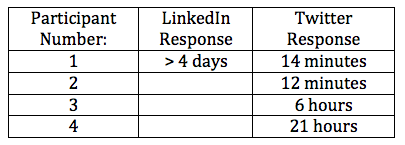I will be in Princeton, New Jersey tomorrow for a presentation at the Robert Wood Johnson Foundation as part of its New Connections program for junior researchers. We will start with a social media overview, but then will conclude with a 45-minute focused session on Twitter. The goal is to give these researchers a taste of how they can practically use Twitter and other social media tools to be more effective in their work.
Here are the slides for second half of my Friday morning presentation:
I hope you will join me in showing the speed, reach and power of Twitter as we conduct a mini-Twitter chat. Hopefully many of the researchers will have created Twitter accounts in advance of the session, and will be able to participate directly.
Our #TweetcampRWJF chat will start at 9:45 a.m. ET on Friday. I have created a couple of questions that are included in the last slide of my presentation above, and I’m asking the participants to tweet their own questions, too.
So if you have some time to share your experience with some younger and mid-career researchers, I hope you’ll join us. Or if you can tweet some pearls of wisdom between now and then, we would appreciate that, too.
Please tweet your introduction and answers to the following, using the #TweetcampRWJF hashtag:
- Introduce yourself and give your location (or where you work) – City, State (Province), Country
- Q1: What is the most important benefit you have experienced in Twitter?
- Q2: What questions do you have about using Twitter in health care or research?
During and after the scheduled chat, I hope you will also engage in dialog with the students as they tweet their questions.


